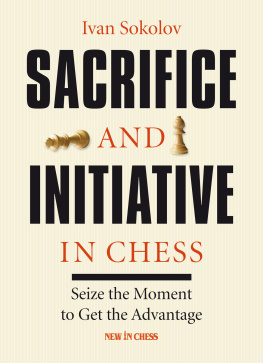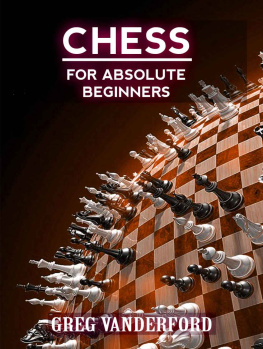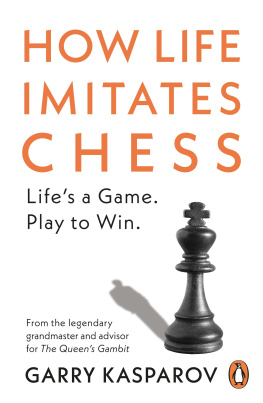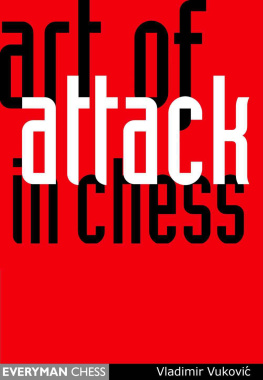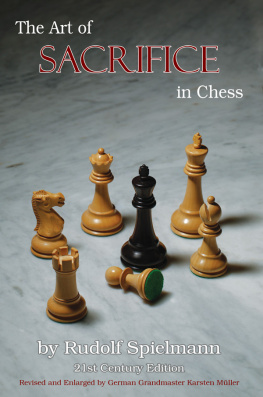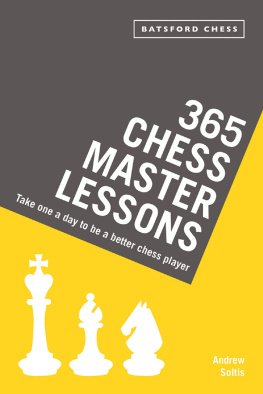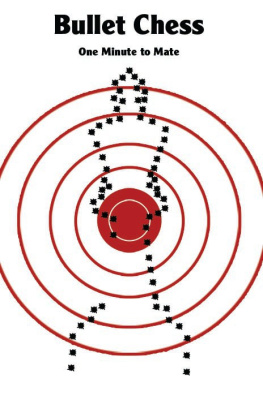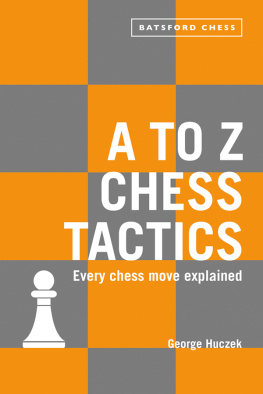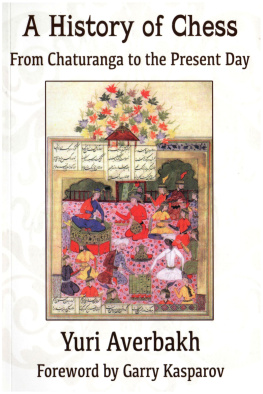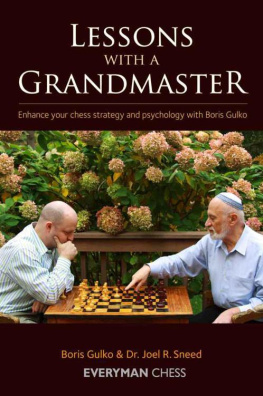All rights reserved. No part of this book may be reproduced, stored in a retrieval system or transmitted in any form or by any means, electronic, mechanical, photocopying, recording or otherwise, without the prior written permission from the publisher.
Photo page 7 by New In Chess.
Please send your remarks to and implement them in a possible next edition.

NEW IN CHESS
Sacrifice and Initiative is a book I have wanted to write for a long time.
Though these are the two most important aspects of dynamic play, they have been largely ignored by chess authors and publishing houses and we still have very little work published on the subject.
Yes, we do have plenty of books dealing with tactical training, tactical motifs, combinations... but those are actually shame sacrifices, meaning that after a forced sequence of moves, the sacrificing side gets his material investment back with interest.
On the subject of the true sacrifice, where the sacrificing side takes off on a journey, on a slippery road with no guarantees, still very little work has been published, and we often have to go as far back as Rudolf Spielmann or Vladimir Vukovic to find a good, structured work.
My work has taken me a long time.
To reach a final decision on the selection of the games, I played through almost 1,000 games, from the old masters to the modern gladiators, in order to select 200 games for a work database. And out of this work database eventually came my final selection.
The reader will quickly notice that the great majority of games are from the Tal period onwards the old masters are barely present. There is a reason for this. When I played through and analysed the old masters games, it quickly became obvious that in the old days, the defenders simply did not defend well, so the attacker was usually not put to the ultimate test to justify his material investments.
After selecting the games, I had to classify them in a structure of attacking themes.
First I made a separation between an Initiative and a Sacrifice part, and then a further division into separate attacking themes. But the reader has to understand that all those themes well, 90% of them anyhow are interwoven! It is very rare that a true sacrifice game is won by using only one single motif. Usually a combination of at least two different attacking themes is needed in order to win in an attack introduced by a true sacrifice.
For the theme selection and the book structure I have tried to combine common knowledge (since the days of Spielmanns book The Art of Sacrifice in Chess, in German Richtig opfern!) with modern practice and find a balance between the two.
Before every chapter, the reader can find explanations of the theme at hand. Here, however, I will give a general set of rules which can be universally applied to the theme of sacrifice & initiative:
- taking over the initiative often means you have to ignore your opponents threat
- when your opponent poses a threat, try to find a way to ignore it
- an opponents threat can be ignored by posing a higher-degree threat of your own
- to get to your opponents king in the centre or a castled king, you need open files and diagonals, and you should often be ready to sacrifice to achieve this
- removing the pawn defences in front of the enemy king is often essential, and frequently the only way to achieve this is with a piece sacrifice
- in many cases an essential piece in the attack (in order to weave a mating net) is the knight!
- a king chase is often difficult to calculate accurately until the end, but it mostly works for the attacking side
- assessing the ratio of attackers vs defenders (i.e., the forces in the attack as opposed to the forces in the defence) is always a good way to get an idea if something can work
- never recapture a piece immediately without thinking, unless it is absolutely forced, as alternatives may offer surprising tactics
- once you are on the attack, never look back!
- once you are on the attack, do not think about the desired result look for moves instead! Thinking about the result during the game puts a mental brake on the attacker
- once you are swimming in the stream of the sacrificing river swim! Do not look for a lifeboat. The best attacking ideas take an effort and they take courage!
Writing this book has also helped me understand some of the great players better.
Mikhail Tals sacrifices have a reputation that there was a significant amount of bluff involved, and before I started working on this book and had a serious look at his sacrifices, I was inclined to concur to this general opinion.
But nothing could be further from the truth! Even if you give them enough time to run, computer engines are not able to refute 90% of Tals sacrifices. There is always compensation even against the very best defence, and most of the time it is enough for at least a draw.
Of course, I do not know, and I will never find out, how much of those possibilities Tal actually saw and how much of it was his intuition (please see in the chapter on my opinion on this subject). But Im sure he saw a lot! Tal was an attacking devil, a nine-headed monster, a true Houdini. Not that crap we buy for 80 euros and install on our computers Tal was the real deal. He could hide an elephant!
David Bronstein had many original ideas, but in genuine attacking play, attacking geniuses like Tal and Spassky were head and probably also shoulders above him.
There are also things I already knew that were confirmed by my work on this book:
- the involvement of computer engines has killed part of Kasparovs attacking genius
- Spassky was a brilliant attacker, and every chess player is well advised to study his games
- from the modern elite, the player who is the most inclined to take off on the slippery road of an intuitive sacrifice is probably Aronian.
Throughout the book I have highlighted important tips with italics. These tips are repeated at the end of each chapter, so they will be easier to memorize.
I hope that after reading this book, the reader will improve his attacking skills and recognize attacking patterns more easily.
I also hope that the reader will enjoy playing through the selected games, as much as I have enjoyed analysing them!
13 June 2013
Ivan Sokolov
Chapter 1
Ignoring the Threat
Exploring the ways to seize the initiative from the opponent, we will start with perhaps the most common one: ignoring the threat. We ignore the opponents threat by imposing our own threat! Here, most of the time (though not always), ours is a higher-degree threat. In this fight to wrestle off the initiative from your opponent, there is definitely a psychological element present.
I will start with a game from 1958, played by the Magician from Riga.
RL 23.5 (C96) Game 1
Tal, Mikhail
Geller, Efim
Riga ch-URS 1958 (12)

